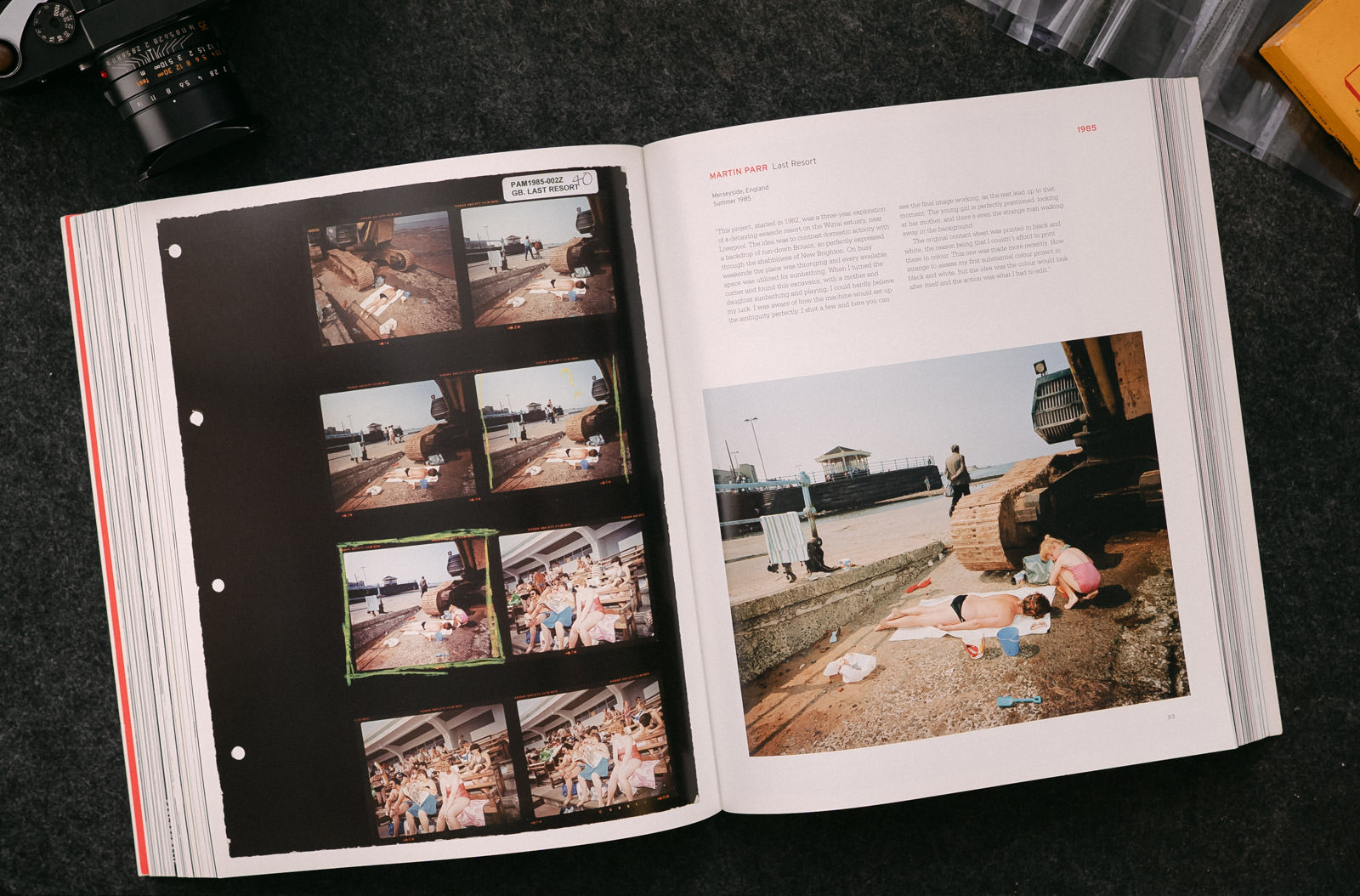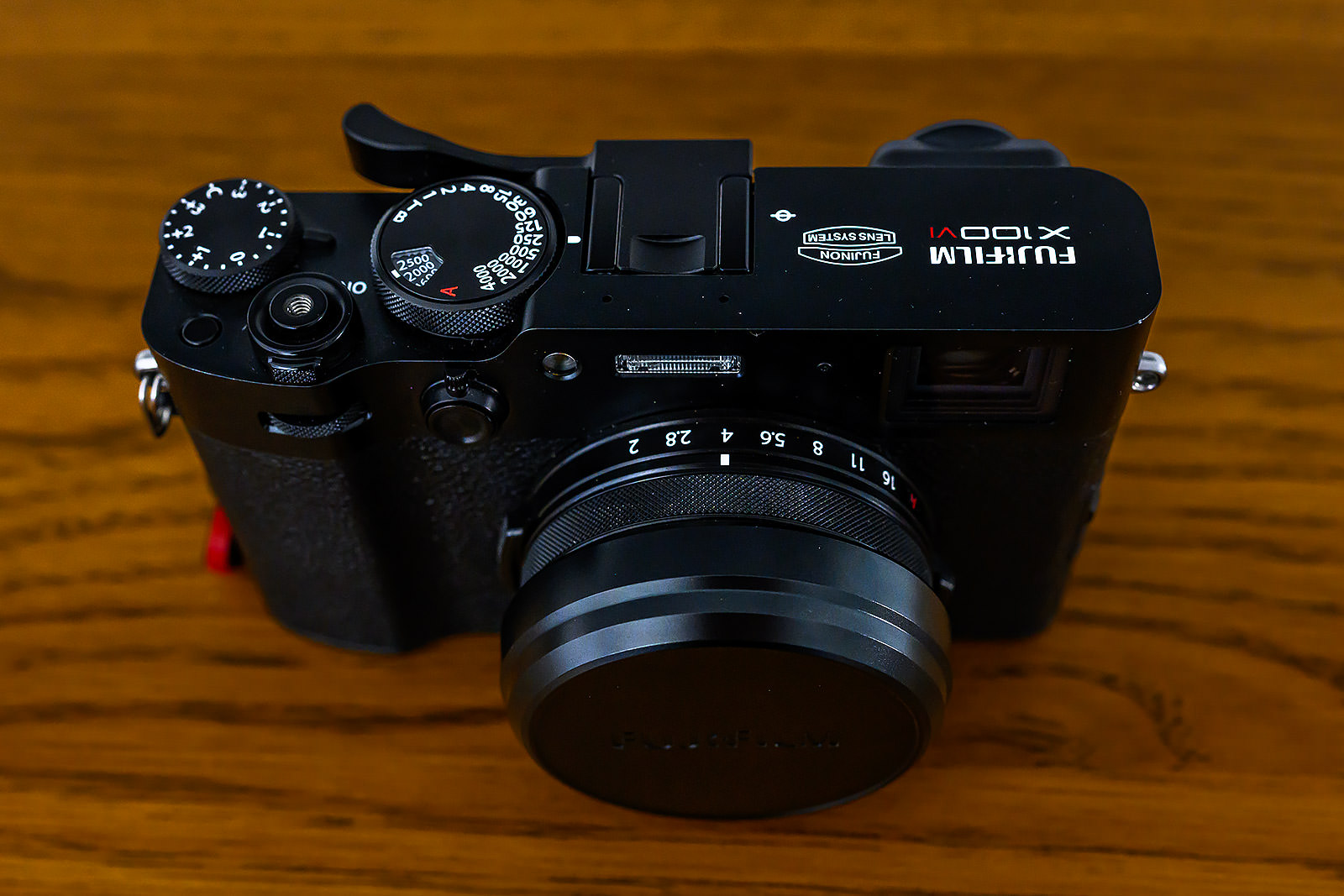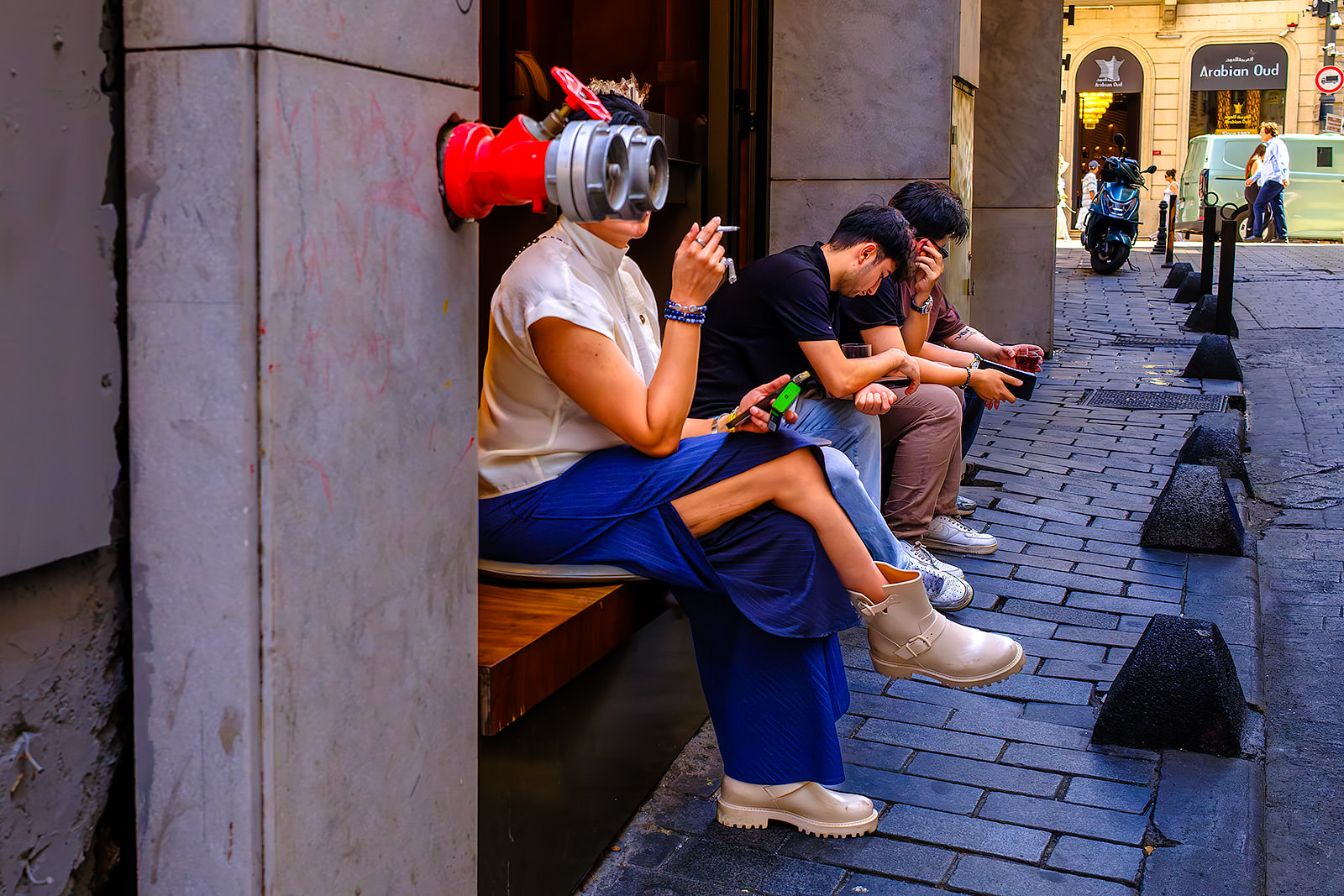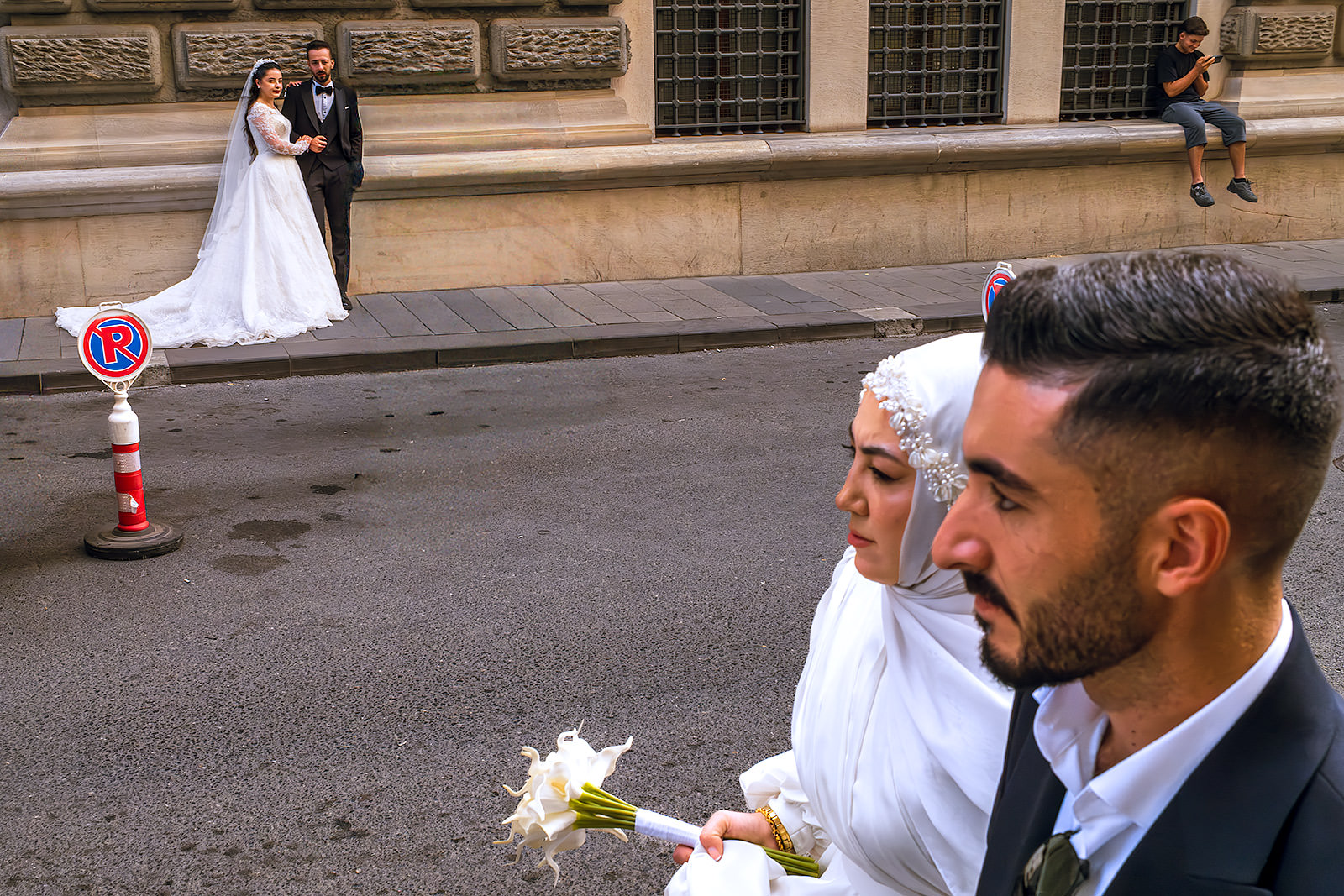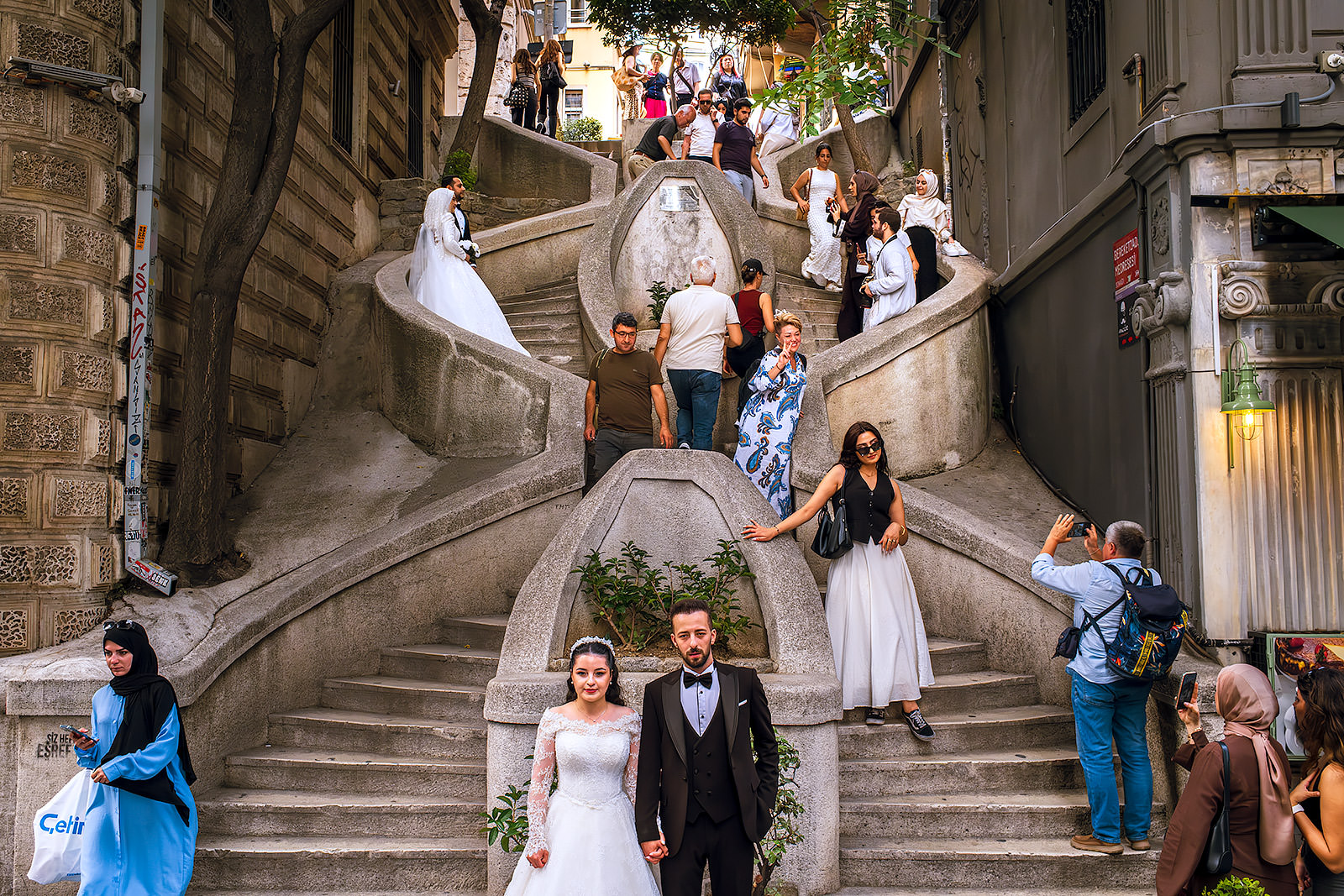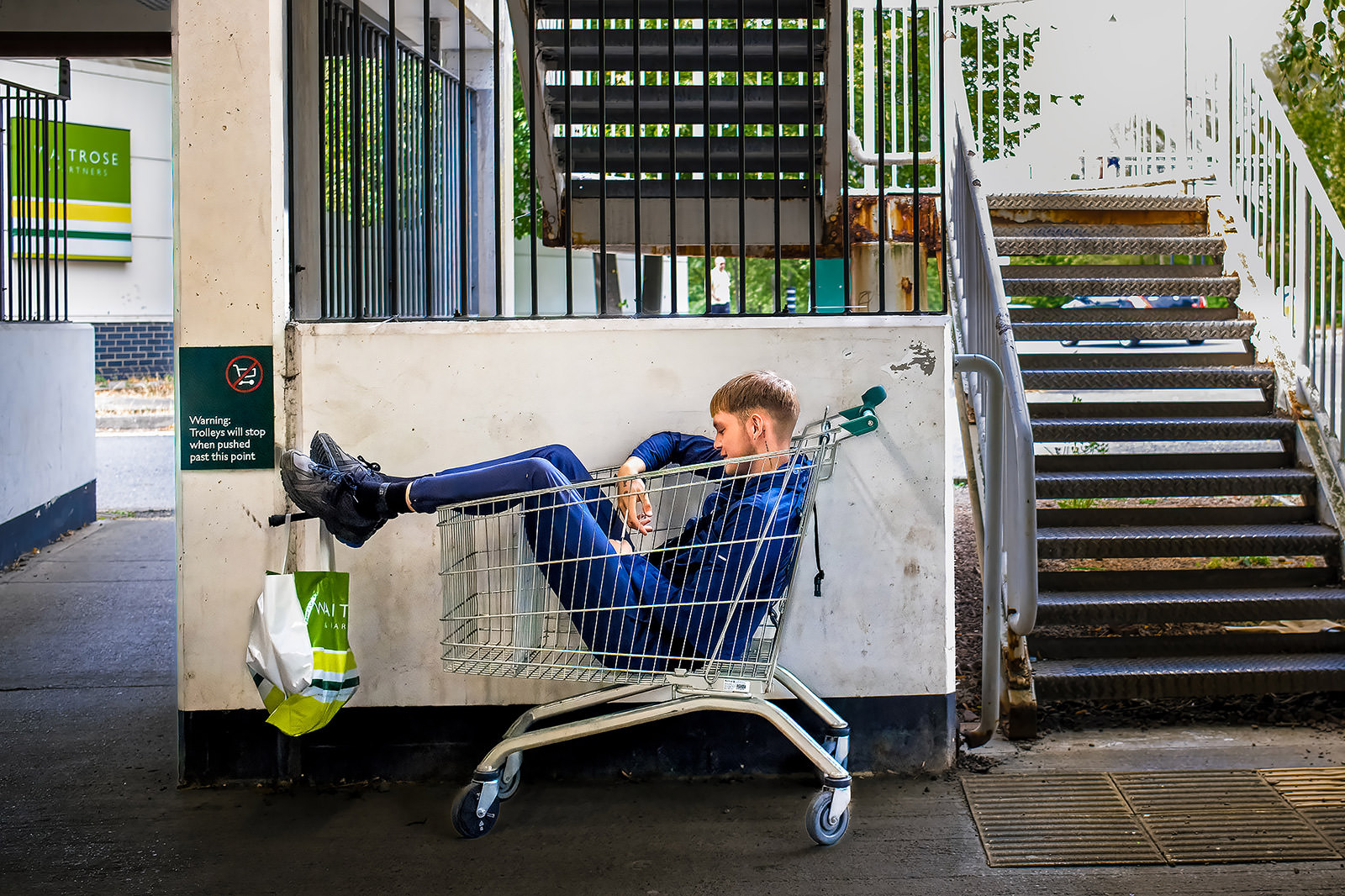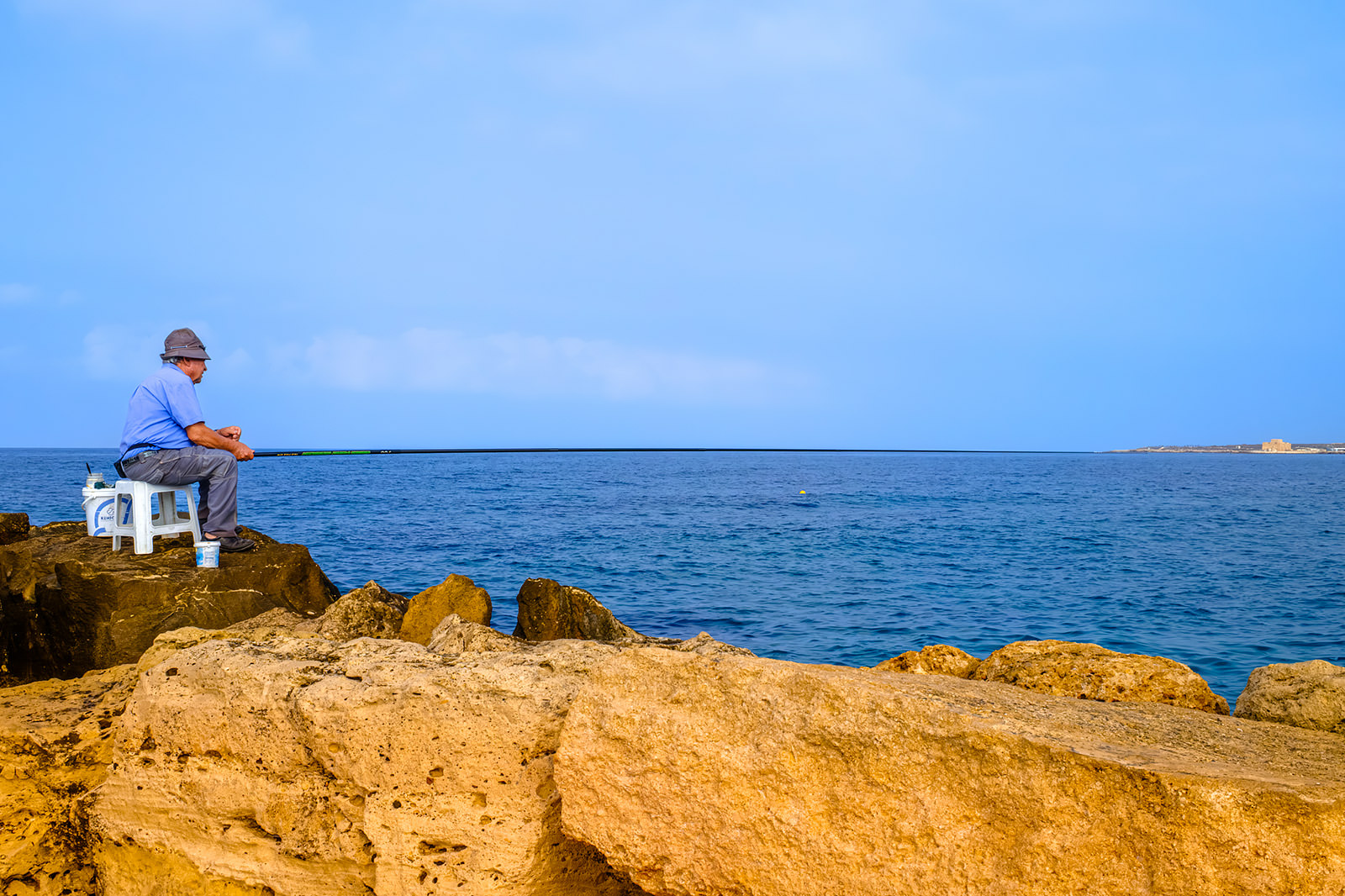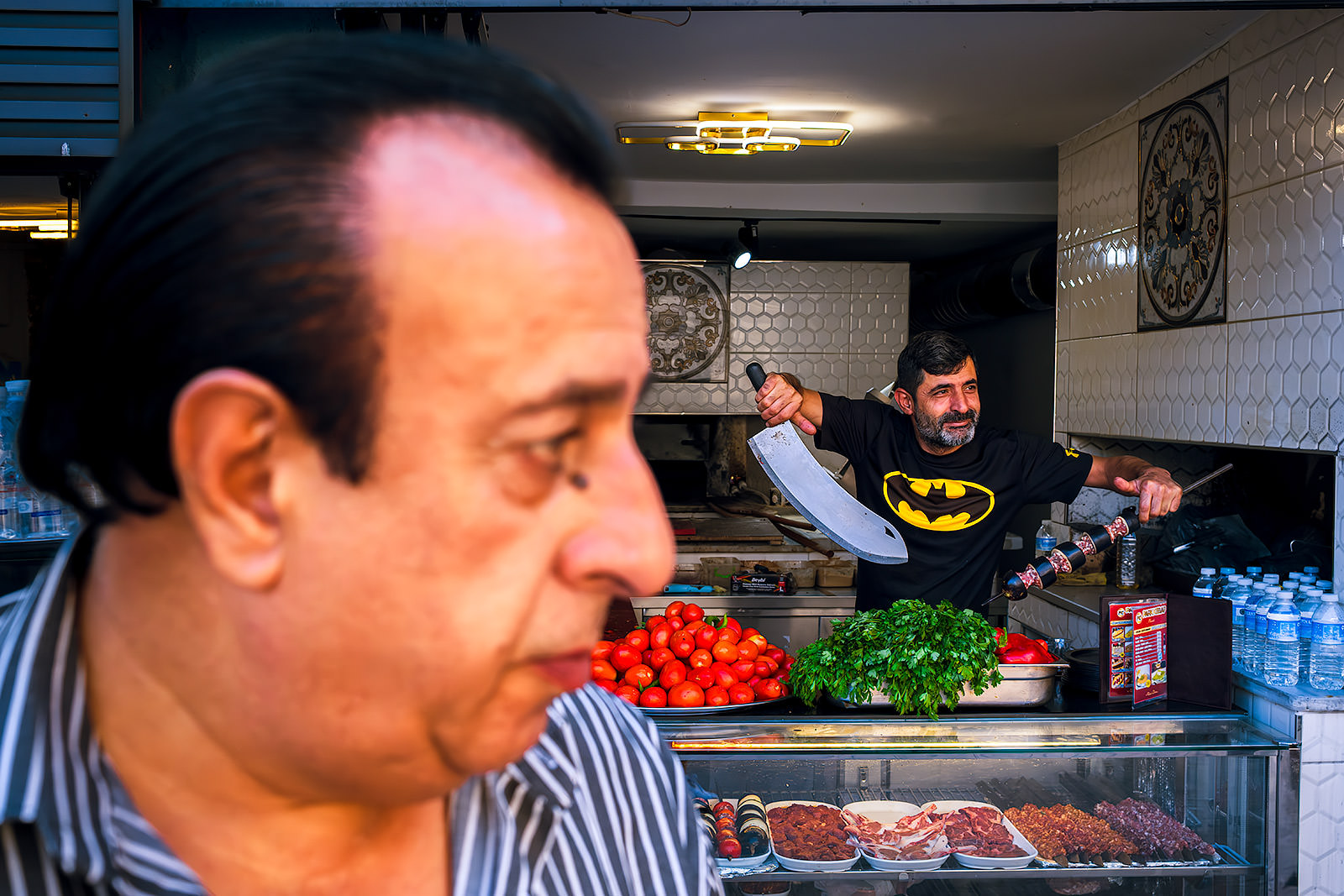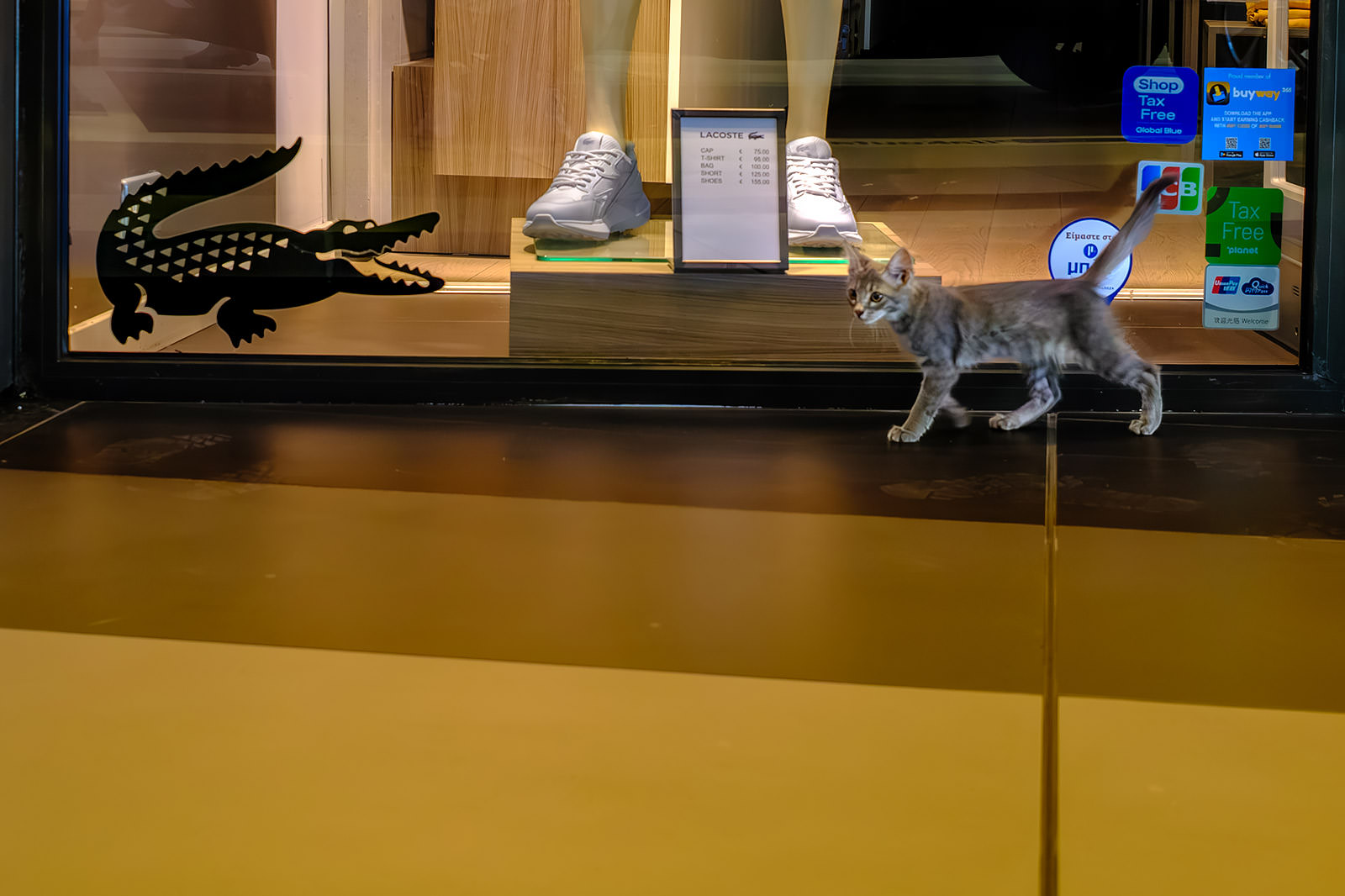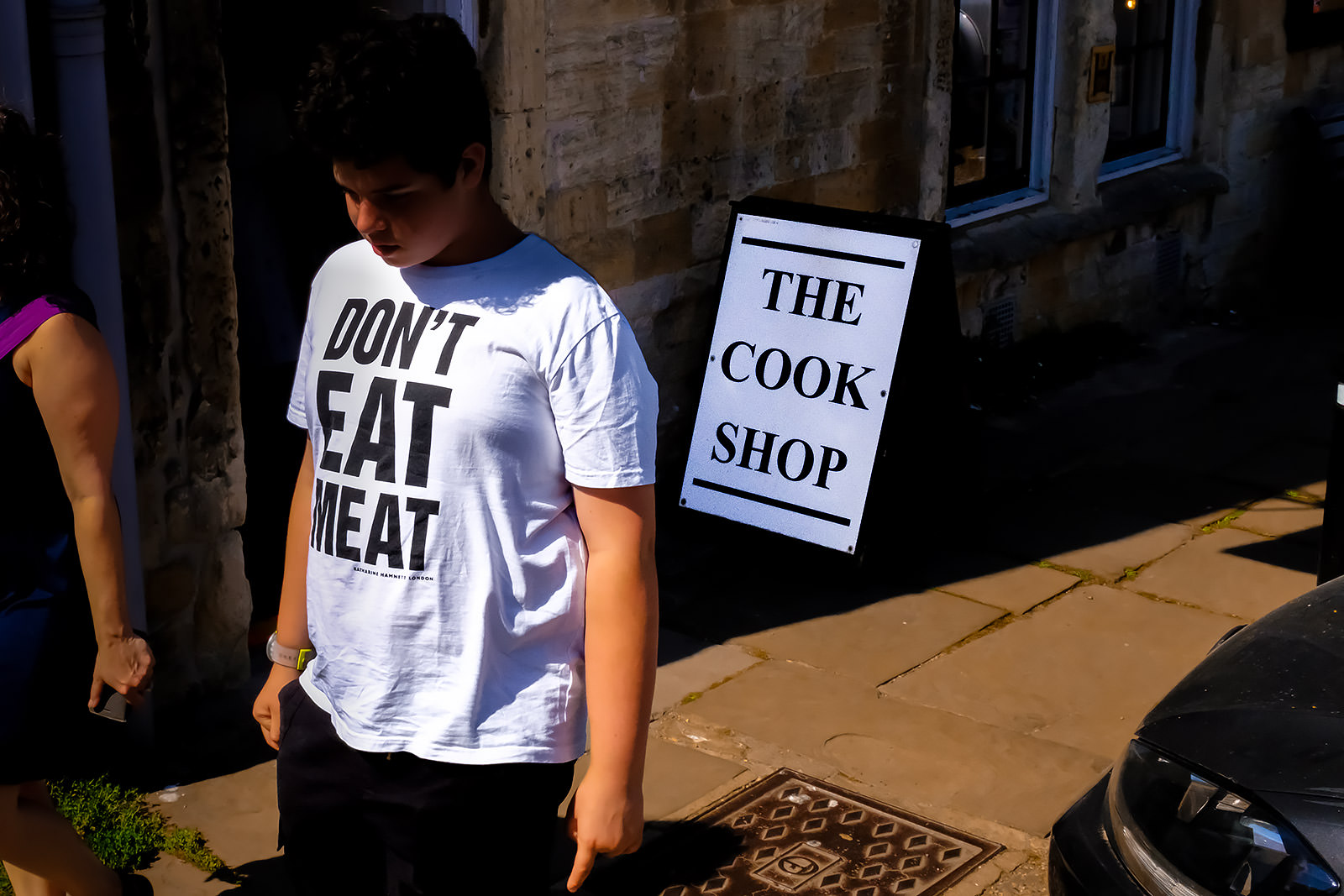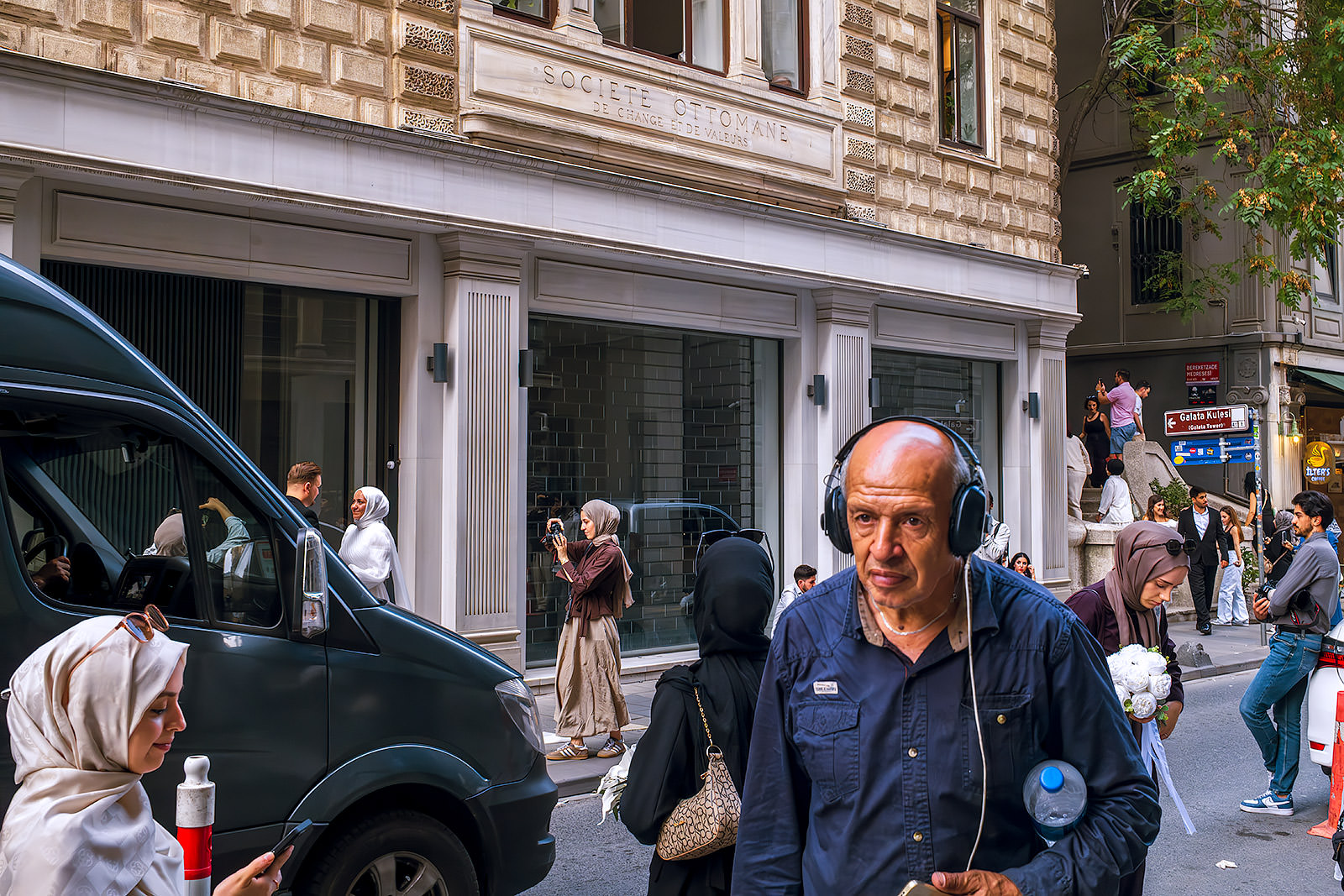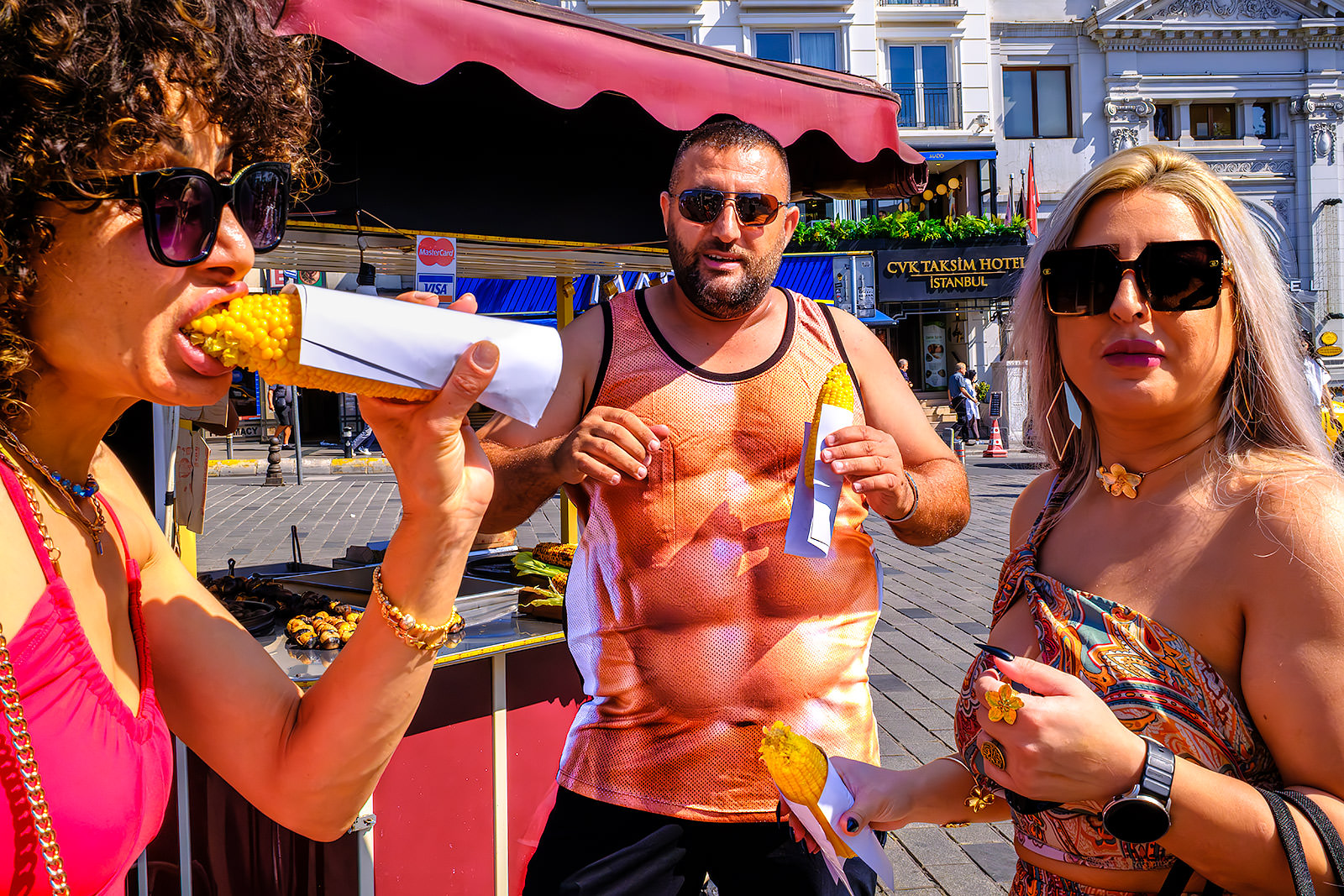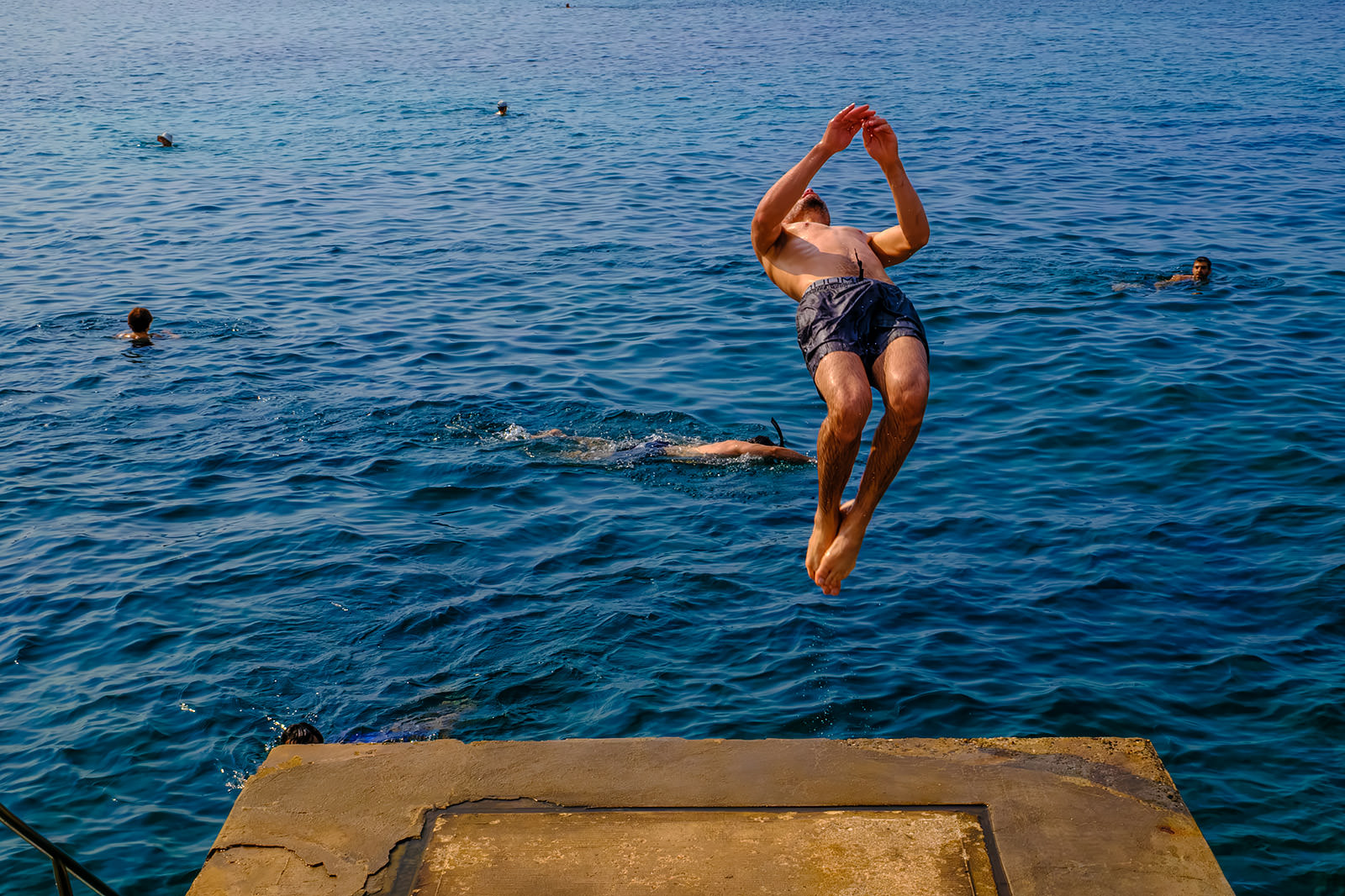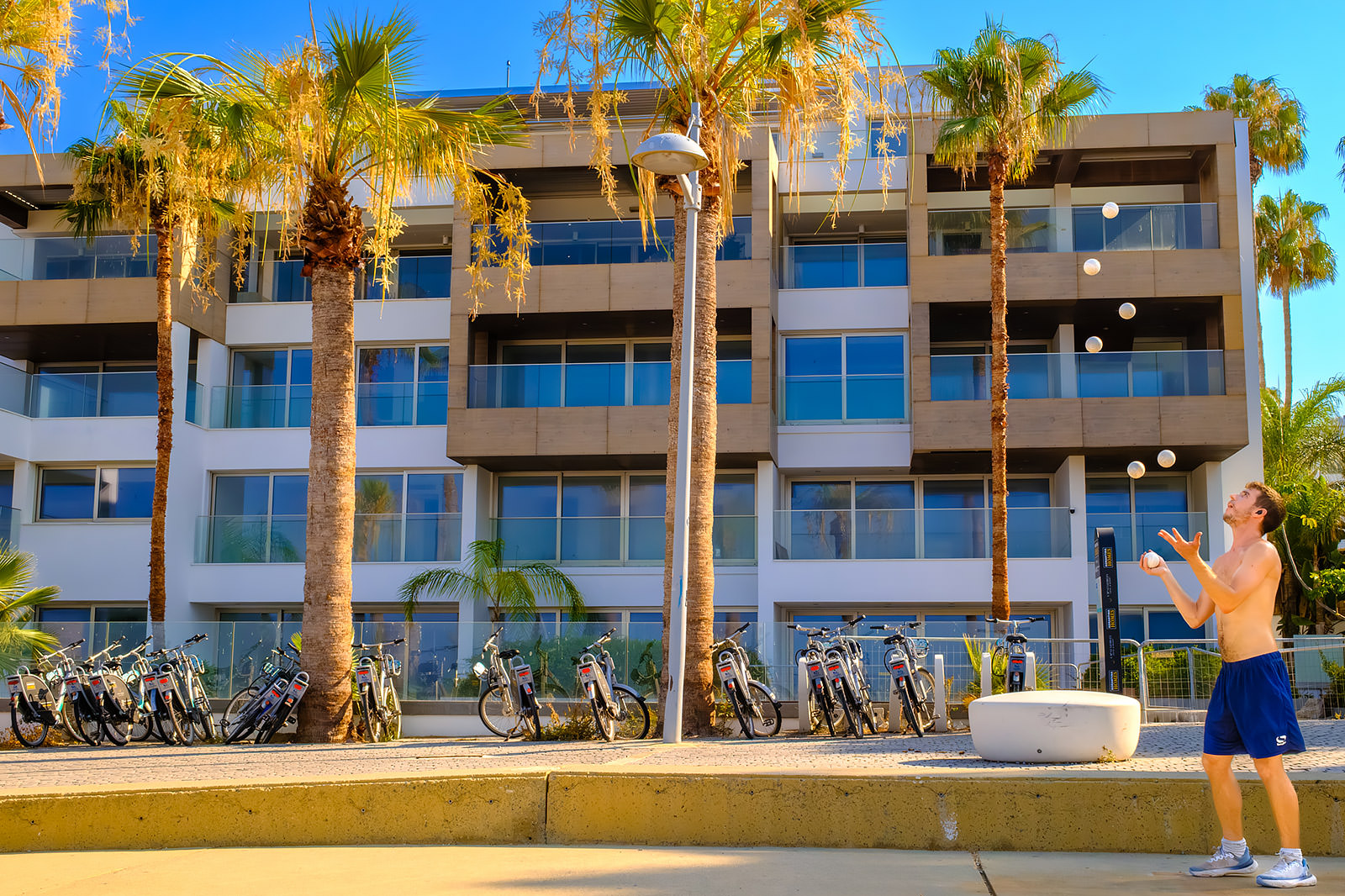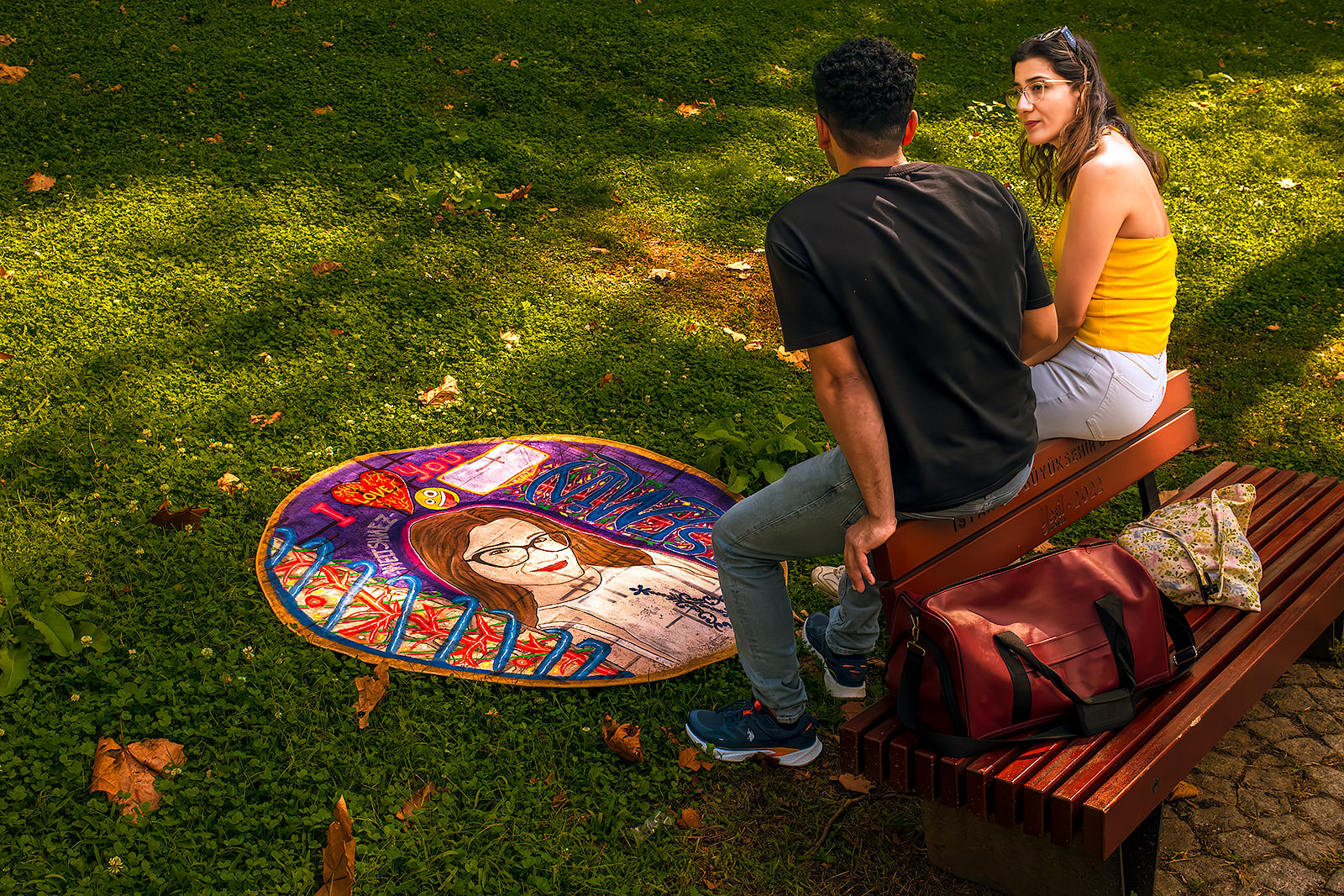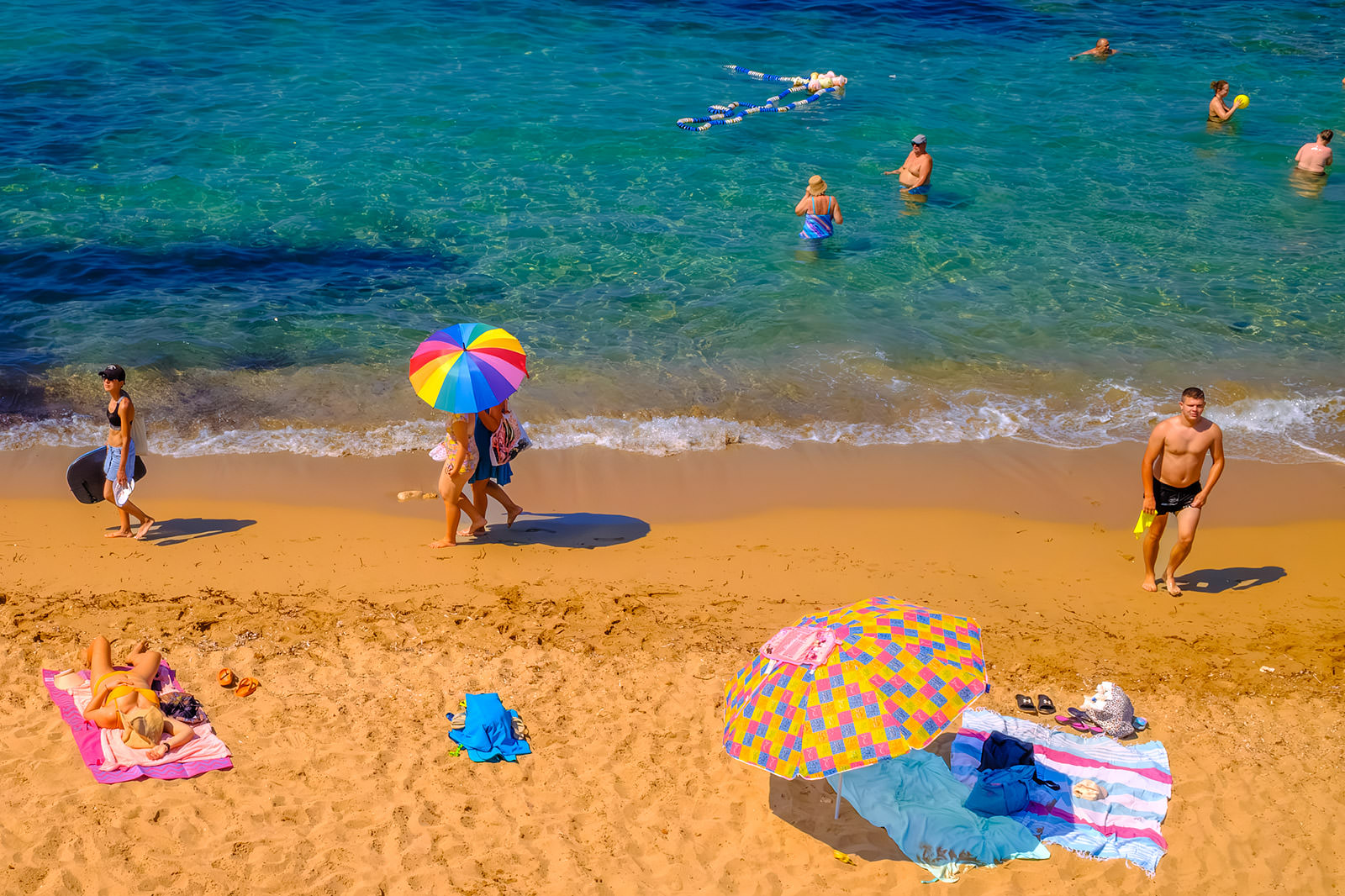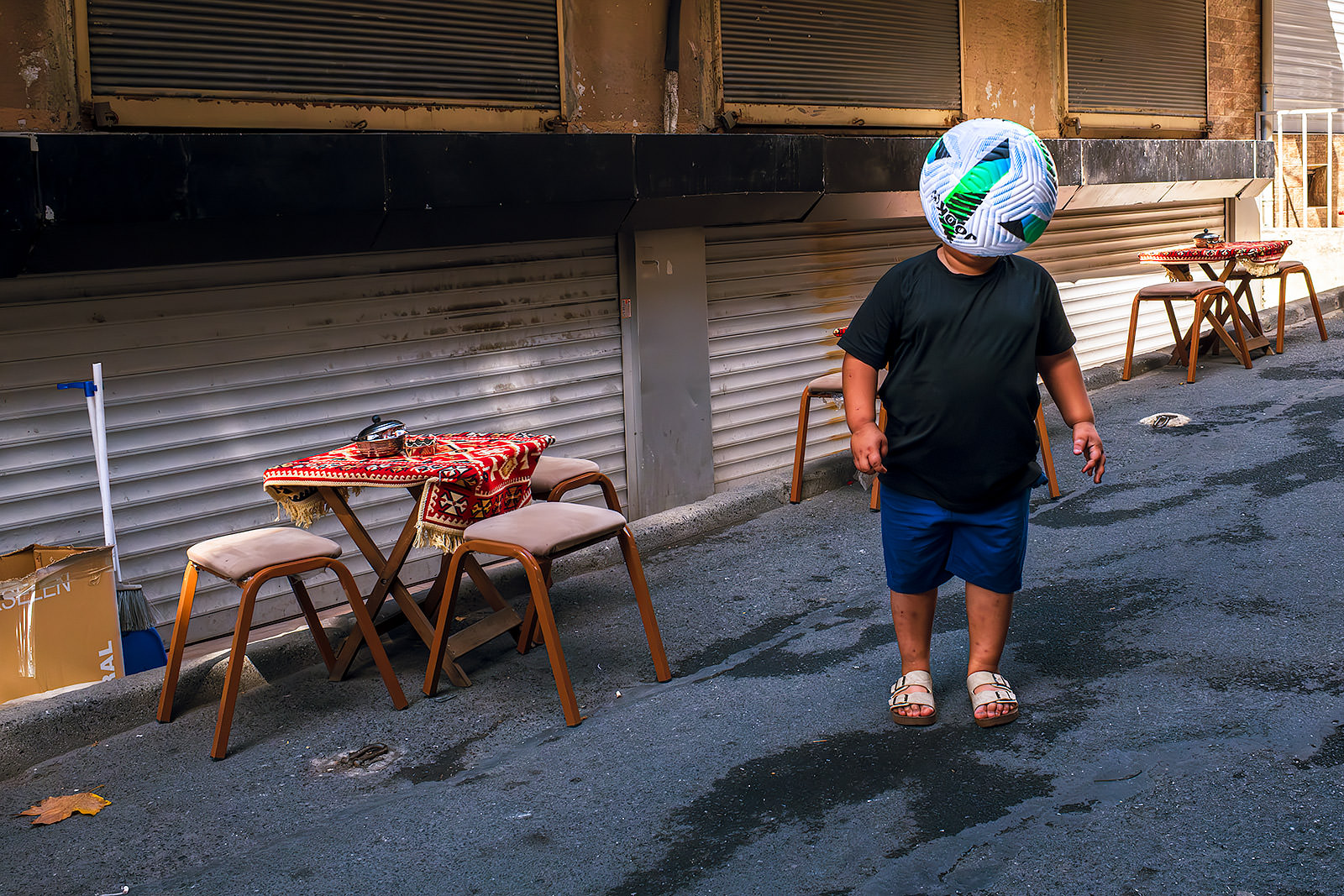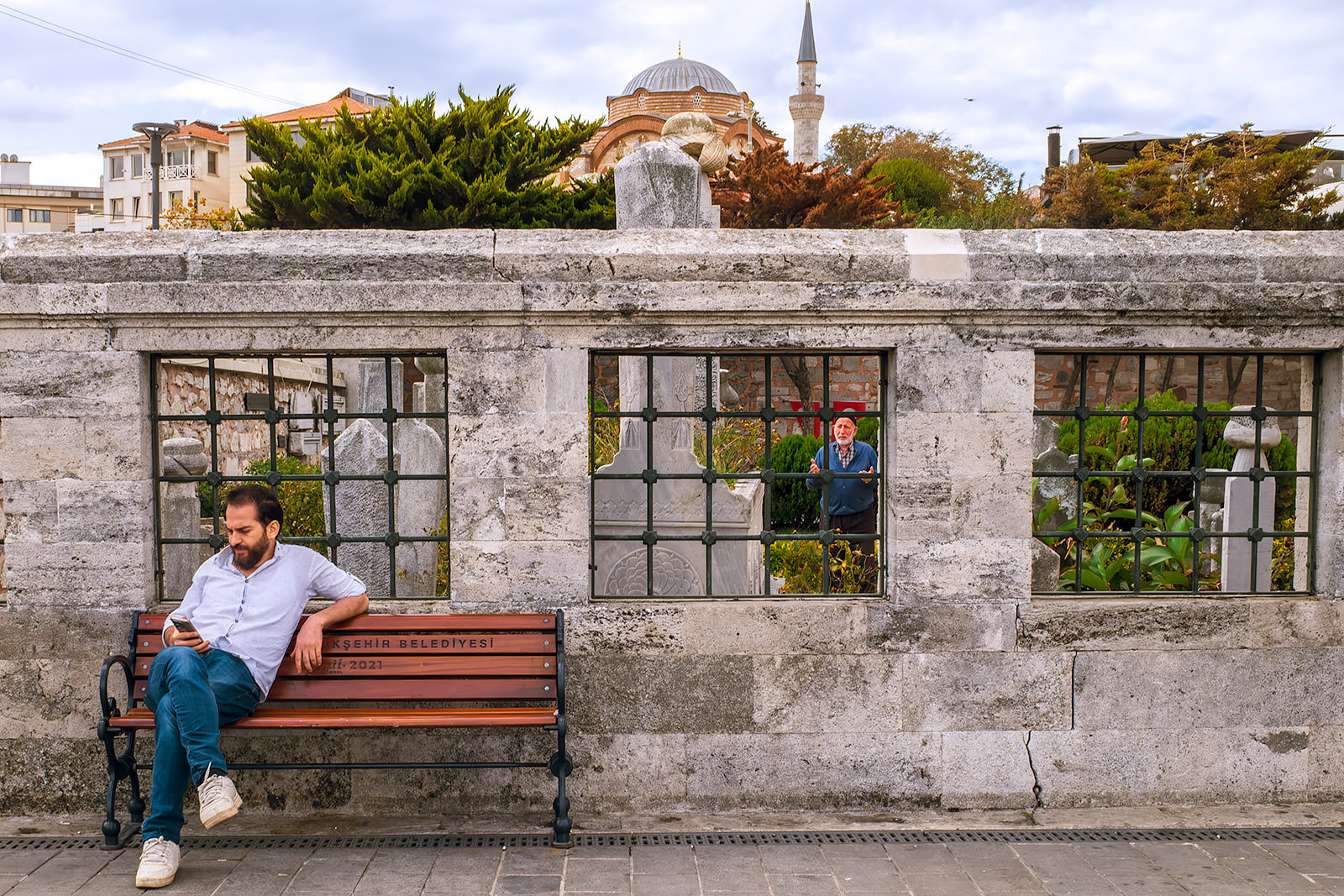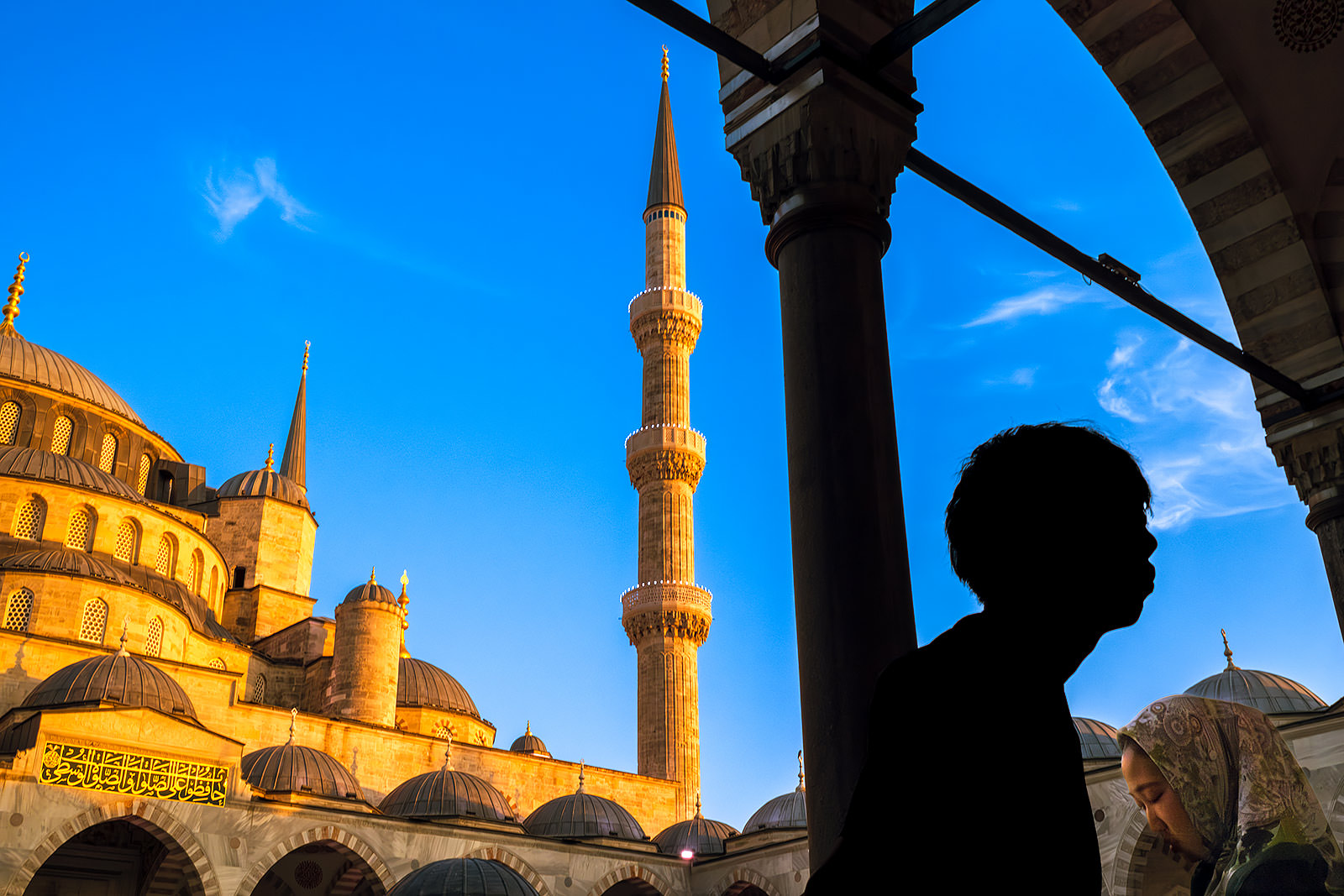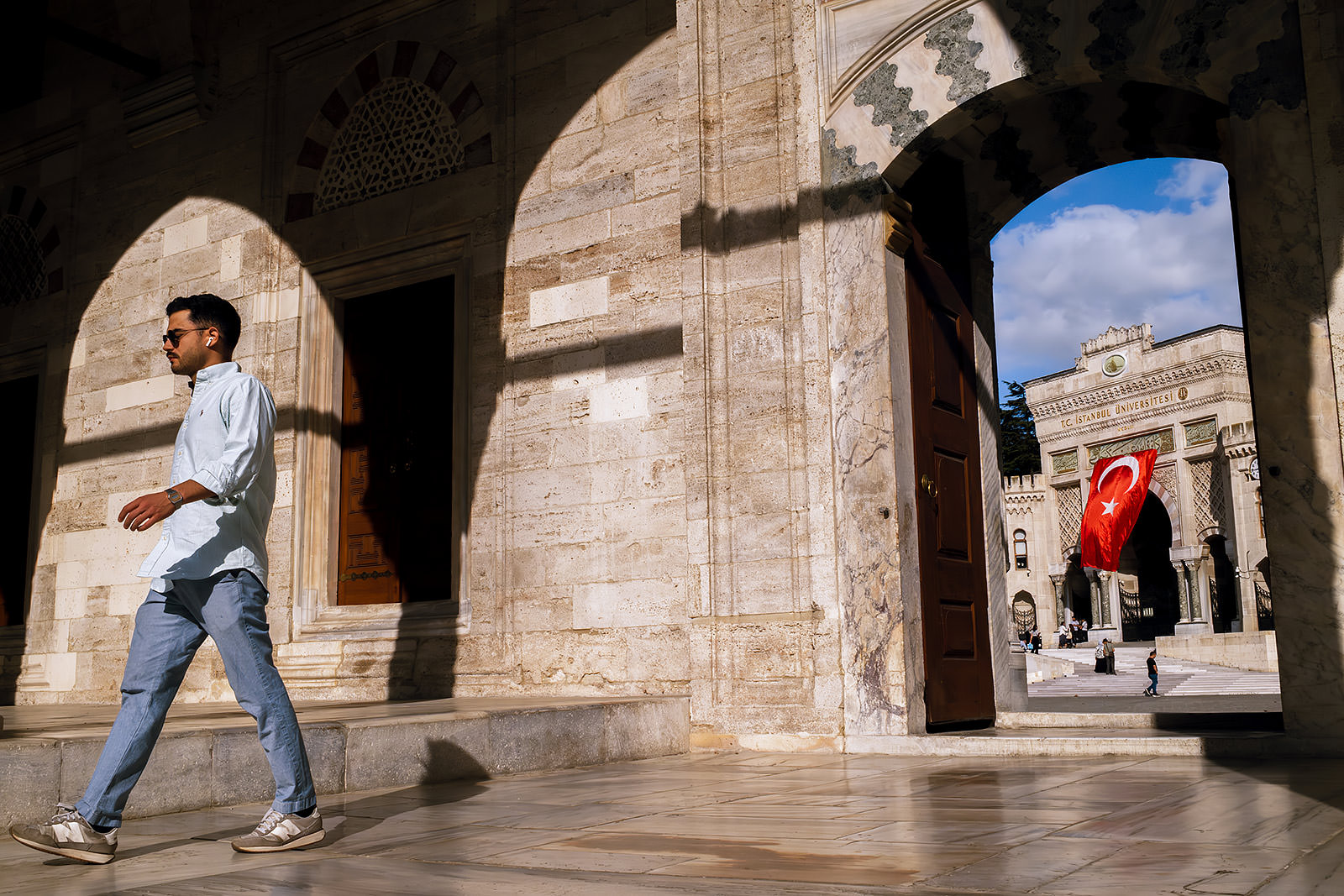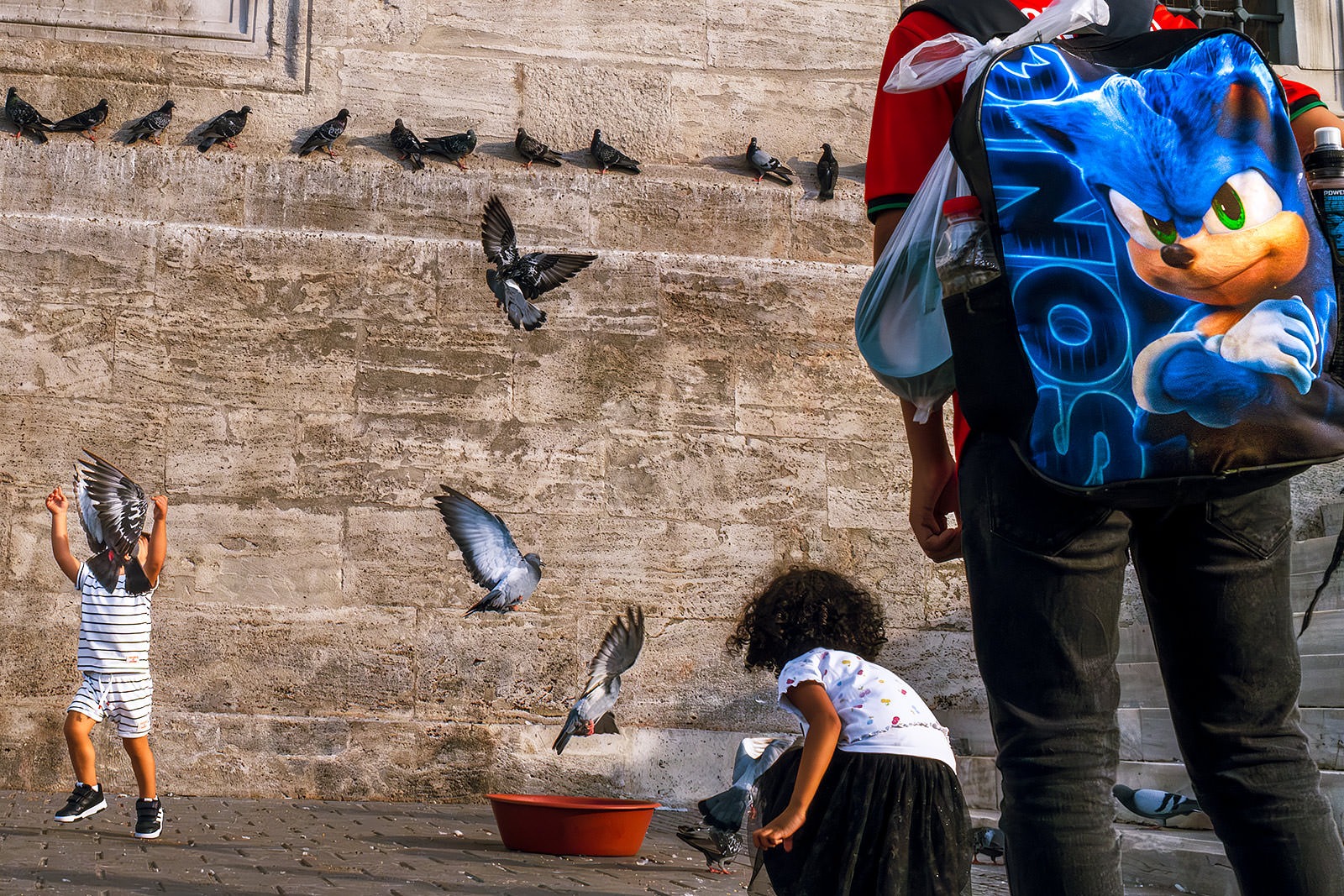Well, hello there! If you have found your way here, then like us, you’re passionate about using a camera to make art. At the Edge, we use the streets as our canvas, observation drives us, and sharing what we love inspires us to keep creating.
We are Eve and Dan the founders of The Edge. Both professional photographers by day, but we both hit the streets with a different set of cameras and capture life around us. Just for the love of it.

“Hello, I’m Eve “
I’m a photographer drawn to the quiet power of visual storytelling. My photography spans a wide range of subjects, from the enjoyment of fun architecture to the intimacy of human connection. Always with a focus on composition that invites reflection. I’m especially attracted to the interplay between form and emptiness and I often use negative space to evoke calmness. I do enjoy the more cheeky side of street photography too, and a clever or humorous capture!

I shoot street photography with a little Ricoh GR. Dubbed my pocket rocket, it’s small, beautiful yet powerful.
I’m a big believer in the power of sharing art and being part of a collective of people who want to explore the world of photography. I hope The Edge will help you do this, create bonds, and provide inspiration for all our members to connect in a safe, creative environment.

“Hey there, I’m Dan “
I have been doing street photography for around 6 years. I was photographing quite a few destination weddings in some cool countries, and thought I should get out there with my camera in and around the weddings. So, I basically took the skills that I already had as a wedding photographer into street photography. I document 90% of the wedding day with the ideology of capturing moments, composition and light. Usually in that order if possible. If you get all 3 in an image, then you’re onto a winner. Now, 6 years later, the skills that I’ve now learnt in street photography are creeping into my weddings. When couples book me, they tend to mention two things – moments and colours. Some of these moments certainly have a street photography vibe. Be it layers, juxtaposing or serendipity, for example. Mixed with what I had already learnt and my style I had developed over the last few years. I like humour and I don’t take life very seriously myself.

There are so many similarities at weddings and street photography. It’s the unknown and not knowing what will happen next. Being there ready to capture it. At any given moment something crazy could happen on the streets or at a wedding. One moment it’s perceived a normal day and the next something magical presents itself to you. Patience, listening and obviously seeing things before they happen cross over to both. Some of the places which I’ve been lucky enough to photograph are Istanbul, Bangkok, Cape Town, Hong Kong, India, Barcelona and I also have a trip planned to New York soon.

With my street photography I tend to see where my feet end up taking me and don’t have a set plan as such. One thought process I do have is that if we have harsh sunlight I’ll try to play with it and think about framing a subject or subjects into the geometry (depending where I am) though in and around this I’ll look at framing opportunities, perhaps waiting for that cool person to walk into my frame. I don’t tend to stay in one place to long, unless it’s the best backdrop, with the best light and then I pray to the photography gods to give me that best moment in amongst it. But don’t we all I’m constantly looking out for moments happening. A possible juxtaposition. Moments are happening all the time. It’s a case of slowing down and not chasing your tail. We’re all seeking that magic where everything lines up perfectly for us. One day it may turn up I see it as a game and a challenge. I don’t beat myself up if I come back with nothing exceptional. It’s all training the brain and good things happen to those who practice and learn. Hopefully at least. A tag line that I use is “Seeking the stillness amongst the chaos” this is how I perceive street photography and also my wedding photography.

Join Us
We’d be thrilled to welcome you to The Edge, a dynamic space for street photographers to connect, share, and be inspired. As a member, you’ll have the opportunity to submit your work to four exclusive awards each year, showcasing your unique perspective to a global audience.
But The Edge is more than just awards. It’s a thriving community where photographers come together to share ideas, explore new techniques, and celebrate the art of visual storytelling. Whether you’re just starting out or have years behind the lens, you’ll find inspiration at every turn.
Stay in the loop with global photography events, exhibition highlights, and book releases, plus engaging conversations about cameras, and everything in between. Everyone is welcome, because great photography starts with a great connection.

